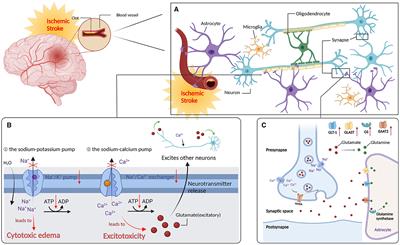Mobilizing endogenous neuroprotection: the mechanism of the protective effect of acupuncture on the brain after stroke
Given its high morbidity, disability, and mortality rates, ischemic stroke (IS) is a severe disease posing a substantial public health threat.

Although early thrombolytic therapy is effective in IS treatment, the limited time frame for its administration presents a formidable challenge. Upon occurrence, IS triggers an ischemic cascade response, inducing the brain to generate endogenous protective mechanisms against excitotoxicity and inflammation, among other pathological processes. Stroke patients often experience limited recovery stages. As a result, activating their innate self-protective capacity [endogenous brain protection (EBP)] is essential for neurological function recovery. Acupuncture has exhibited clinical efficacy in cerebral ischemic stroke (CIS) treatment by promoting the human body's self-preservation and “Zheng Qi” (a term in traditional Chinese medicine (TCM) describing positive capabilities such as self-immunity, self-recovery, and disease prevention). According to research, acupuncture can modulate astrocyte activity, decrease oxidative stress (OS), and protect neurons by inhibiting excitotoxicity, inflammation, and apoptosis via activating endogenous protective mechanisms within the brain. Furthermore, acupuncture was found to modulate microglia transformation, thereby reducing inflammation and autoimmune responses, as well as promoting blood flow restoration by regulating the vasculature or the blood–brain barrier (BBB). However, the precise mechanism underlying these processes remains unclear. Consequently, this review aims to shed light on the potential acupuncture-induced endogenous neuroprotective mechanisms by critically examining experimental evidence on the preventive and therapeutic effects exerted by acupuncture on CIS. This review offers a theoretical foundation for acupuncture-based stroke treatment..
Read the full article at the original website
References:
